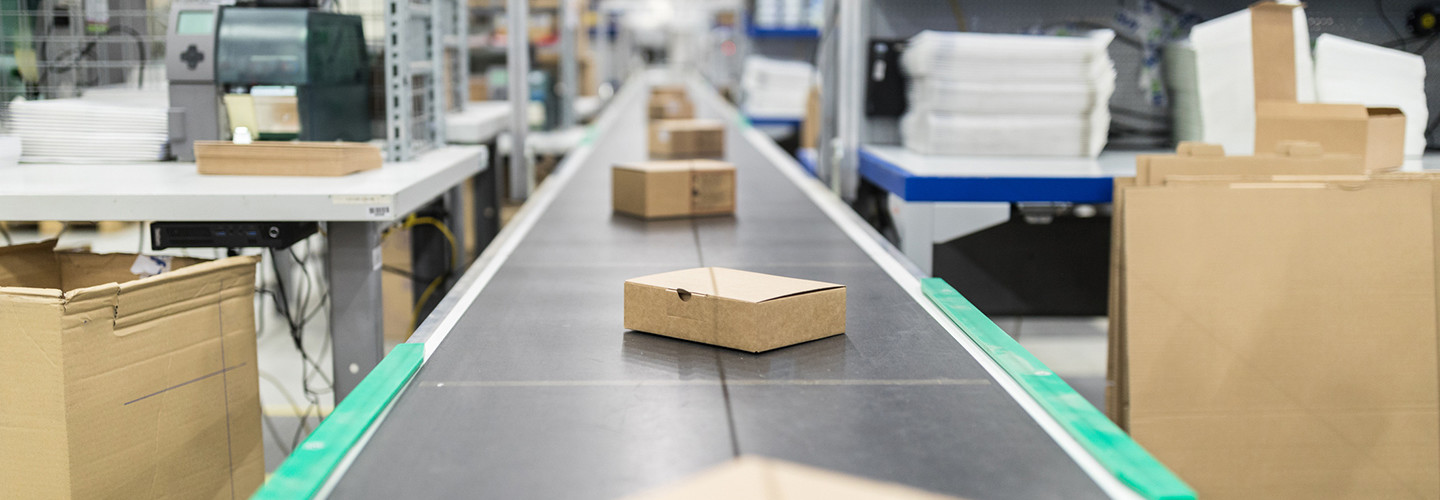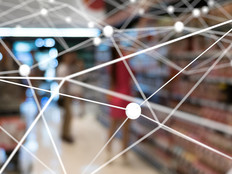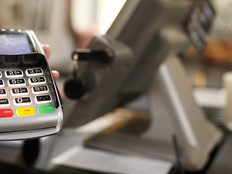Retail Supply Chain Visibility Gets a Boost from Emerging Technology
If retailers the world over want to compete with Amazon.com’s one-click ordering and next-day (or even same-day) shipping, they need to up their supply chain game.
This is not exactly news to retailers. However, retailers say that gaining visibility into their supply chains is actually more important than same-day delivery, according to a recent survey of retail logistics executives.
To gain that visibility, retailers are increasingly turning to the Internet of Things, as connected solutions offer retailers enhanced insights into where their products are, from production through distribution and delivery to stores. Blockchain is poised to become an important tool in verifying where products are along the supply chain.
“True visibility into each step of the supply chain is essential for peak operations, particularly in today’s uncertain global landscape,” Blake Shumate, COO of American Global Logistics writes in a Supply Chain Dive column, adding, “To remain competitive, businesses need the technology, processes and systems to identify where products are and redirect them quickly around the globe.”
As Supply Chain 24/7 notes, it’s critical that retailers have insights into their supply chains so they can keep items in stock: “Out-of-stock inventory at a retailer will quickly send millennials — who’ve come of age amid an endless aisle of merchandise online — running to another brand. And inventory holes are a recipe for eroding shopper loyalty across demographic groups.”
SIGN UP: Get more news from the BizTech newsletter in your inbox every two weeks!
Retail Supply Chain Visibility Is Critical
Full supply chain visibility is the top service demanded by customers, according to 194 logistics executives surveyed by last-mile solutions provider Localz and eft Supply Chain and Logistics Business Intelligence, a networking agency for supply chain business leaders.
According to the report, 56 percent of the logistics executives cited full visibility as the most important service customers want from last-mile logistics providers, ranking it above same-day and next-day delivery (51 percent each) and delivery hour notification (48 percent).
Of the 129 supply chain executives from retailers, manufacturers and brands, 66 percent said next-day delivery was a top service they want from their logistics providers, with 57 percent citing full supply chain visibility.
“We’ve moved from this era of trust to continual verification,” Localz CEO Tim Andrew told Supply Chain Dive. “That’s one of the key things that's somewhat expected. We see this trend of the customer being in control. Same-day delivery is still a high expectation, but same-day delivery [as a service] isn't growing as fast.”
What are some of the technologies retailers can use to gain that visibility, alongside their logistics and supply chain partners? Here is a quick rundown:
IoT Helps Retailers Gain Supply Chain Insights
The Internet of Things is one of the most popular paths for retailers to gain supply chain visibility, through the deployment of frequency identification tags and sensors.
According to Zebra’s 2017 Global Retail Vision Study, 72 percent of retailers surveyed said they planned to reinvent their supply chain with real-time visibility enabled by automation, sensors and analytics.
Retailers can use IoT to get visibility into their supply chain at every stage of a product’s lifecycle. Tom O’Boyle, director of RFID for Barcoding, Inc., notes that RAIN RFID technology, which connects RFID-enabled tags to the internet, is an option retailers can use to track products.
“This can be a challenge for manufacturers whose suppliers are across many different countries with varying technological infrastructures, and many wait until they have received the products from their suppliers to tag the items and start their digital life,” O’Boyle says in an op-ed on Manufacturing.net. “However, manufacturers can leverage passive and active RFID-based sensors within the plant to easily and efficiently begin tracking their goods.”
Passive RAIN RFID tags can be used to track smaller, less important components, but “active RFID tags that draw from their own power supply to transmit signals provide real-time location data and are best suited for tracking larger, high-value assets,” O'Boyle says.
IoT, along with automation and warehouse execution systems, allows retailers and their supply chain partners get more visibility into where products are in a warehouse. For instance, Bluetooth Low Energy tags can be read from 100 to 300 feet away, O’Boyle notes, and can be used to track pallets or high-value pieces of equipment. “Implementing IoT technology within the warehouse not only improves security, but also the management, storage, movement and condition of the goods within the facility —improving labor efficiency, increasing order accuracies and reducing inventory shrinkage,” O’Boyle says.
Once products leave the warehouse, IoT technologies can track them in transit. IoT solutions that combine sensors with cellular wireless connections, GPS, Wi-Fi and BLE make it possible to track goods in transit,” O’Boyle notes. In addition to tracking the location of goods, some solutions allow manufacturers to monitor environmental conditions during transit, such as temperature, humidity, shock or light exposure, ensuring the quality of sensitive items when they arrive at their destination,” he says.
Retailers can also use RFID tags and smart shelving to track which products are actually sold to customers in physical stores, which can help inform future orders.
Blockchain Can Make Supply Chains More Reliable
Blockchain technology is of interest to financial institutions, including credit unions, but it also has tremendous potential to secure and track supply chains.
As the website SupplyChainBrain notes, there are numerous ways retailers can take advantage of blockchain. First, the secure digital ledger that sits at the heart of blockchain “makes data resilient to a technology or organizational failure, and it can lead to more uniformity in the way companies access and store important documents and transactional histories.”
Blockchain also enables “smart contracts” since it can support the automated execution of terms, conditions and business rules. “Currently, retail agreements are largely manual and based on proprietary systems,” the site notes. “A smart contract can automatically enforce the terms and conditions as defined between trading partners. It is through this feature that real-time visibility may be achieved.”
There is still too much uncertainty between the time a retailer places an order for a product and the shipment arrives at the retailer’s door. “Today’s systems allow for substitutions that lead to reconciliation problems — blockchain will not permit such shipments, as noncompliant transactions cannot be written to the ledger,” SupplyChainBrain notes.








